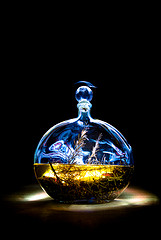Estimation of Microbial Limits in Oils
Oil is an important source of fat and is important in human diet. The microbial limit tests are designed to perform the qualitative and quantitative estimations of specific viable microorganisms present in pharmaceutical substances or in the samples. The present paper deals with the various procedures in estimation of microbial limits in oils.
The whole 4 pages article is available for download here.
Oil is an important source of fat and is important in human diet. Beside this, oil plays a vital role in maintaining the agricultural economy of the country. The necessity for providing more oil and fat to the human society has been the incentive for intensive cultivation of crops. Scientists are working in this field to search out natural sources of oil crop's containing various drugs of medicinal importance. Their sole aim has been to have better yield. Later, as a result of more and more appreciation of oil in our daily food, they have unavoidable place in man's economy. As a matter of facts, the interest in production of oil crops has increased tremendously in recent years.
The microbial limit tests are designed to perform the qualitative and quantitative estimations of specific viable microorganisms present in pharmaceutical substances or in the samples. It includes tests for total viable count (bacteria and fungi) and specified microbial species (Escherichia coli, Salmonellla, Pseudomonas aeruginosa and Staphylococcus aureus). It must be carried out under conditions designed to avoid accidental microbial contamination of the preparation during the test. When the test specimens have antimicrobial activity or contain antimicrobial substances must be eliminated by means of procedure such as dilution, filtration, neutrilization or inactivation.
For the test, use a mixture of several portions selected random from the bulk or from the contents of a sufficient number of containers. If test specimens are diluted with fluid medium, the test should be performed quickly. In performing the test, precautions must be taken to prevent biohazard. According to USP the test is designed to determine total aerobic microbial count and yeast and mould count. This test demonstrates that product is free from Staphylococcus aureus, E. coli, Pseudomonas aeruginosa, C. albicans and A. niger. The methods given are invalid unless it is demonstrated that the test specimens to which they are applied do not of themselves inhibit the multiplication under the test conditions of microorganism that can be present (Eisenhart and Wilson, 1943; Ashby, 1976; Palmerm et al., 1976; Claus,1989).
The whole 4 pages article is available for download here.

